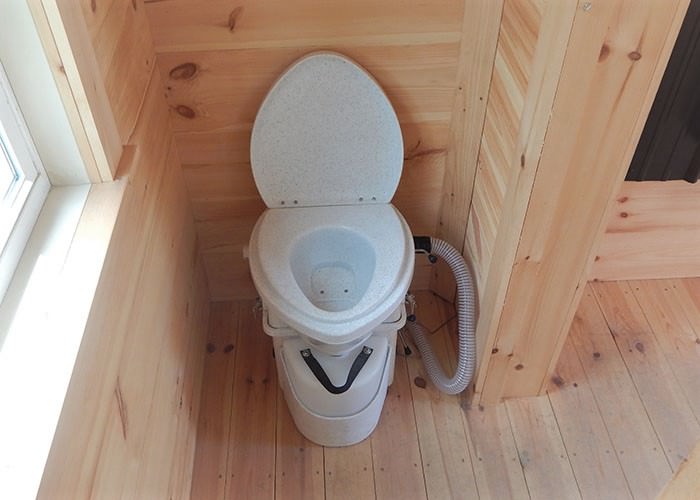Composting toilets are increasingly becoming widespread due to a broad array of advantages related to water conservation, easy maintenance, and the ability to help with soil fertilization. Yet, the adoption of this valuable and money-saving solution is often hampered by the lack of knowledge about this technology. Let’s correct this with the help of this mini-guide.
How Does a Composting Toilet Work?
First, it is useful to learn how a composting toilet works. It’s rather simple, really, as these toilets rely on two natural processes that take place all the time – the decomposition of feces and the evaporation that accompanies it. The key role here is played by aerobic bacteria that break down the organic matter as part of the same process that takes place on the forest floor and creates humus.
Human waste in the toilet consists of some 90% of water which is evaporated and evacuated via a vent system. The solid part of the waste is converted to the fertilizing soil by creating a suitable environment in which the bacteria can do their job. Before you say anything, yes, the process is odor-free.
Higher temperature and moisture promote the proliferation of useful bacteria that get the decomposition done much faster than in nature. What remains of the organic matter following this process is called compost manure which is, in turn, easily managed and disposed of. Thus created, this manure is completely safe because the same process of decomposition takes care of any viruses and germs that may cause diseases.
Why Should You Use a Composting Toilet?
Composting toilets come with three main advantages.
· Water conservation, from 30%-60%. Depending on the model, some composting toilets need no water at all. Others require an absolute minimum for flushing purposes. They will not only reduce your water bills but make you feel good about protecting the environment.
· Easy installation and maintenance. No electricity or water supply on the site of your future toilet? No problem, just go ahead with a composting toilet. This makes them a perfect choice for holiday homes, boats, or camping grounds. Also, they require less maintenance than your average home toilet.
· Free fertilizer for all. If you want it, you can use the resulting product of the decomposition (manure) as a perfectly usable and free fertilizer. Instead of throwing the manure away, you can keep it as a biodegradable and natural soil-enhancer. If you still feel a bit queasy, know that this one is perfectly safe for use with fruit and vegetables and far superior to similar synthetic solutions.
How Do I Take Care of My Composting Toilet?
First, let’s break down the components of a typical composting toilet.
· The composting chamber is the place in which the composting additive is mixed with feces for the purpose of decomposition.
· toilet exhaust fan and the exhaust system evacuates the gases during the decomposition.
· Ventilation provides aeration.
· Compost retrieval system.
A key thing to bear in mind is that composting toilets do not require you to add unnecessary chemicals that can kill useful germs that promote decomposition. The bacteria and the environment in which they can do their job are sufficient for this task. It’s also important to avoid flushing stuff down the drain as these toilets are designed to handle human waste and nothing else.
Conclusion
As a versatile, eco-friendly, and flexible installation, composting toilets bring the beauty and simplicity of natural processes to all of those who want to reduce their water bills and acquire quality fertilizer for free.













